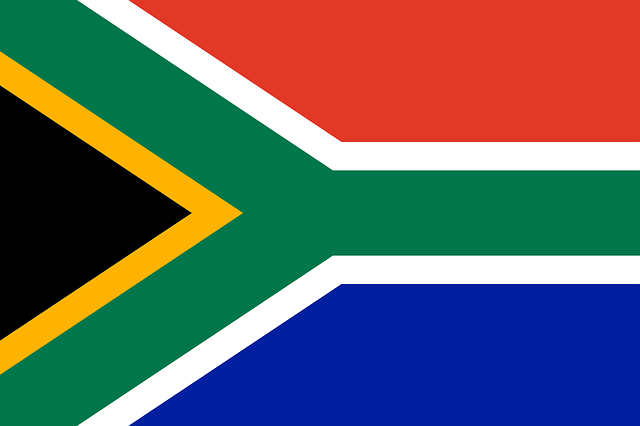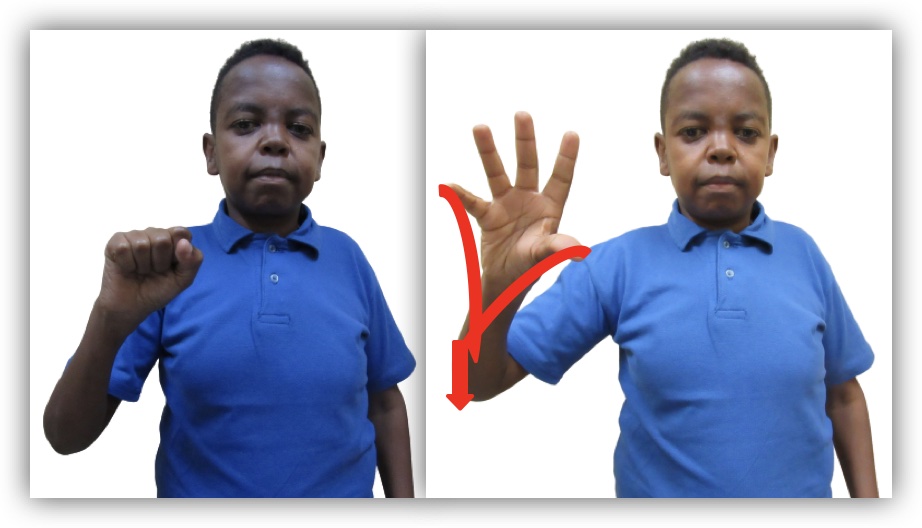Republic of South Africa
Total Population
58 million
Deaf Population
383,000
Nation's Official Language
Afrikaans, English, Ndebele, Sotho, Setswana, Swti, Tsonga, Venda, Xhosa, Zulu and South African Sign Language
Other Languages
The number of established languages listed in Ethnologue is 36. Some of these are:
- Dabarre
- Garre
- Maay
- Swahili
- Tunni
Name of Sign Language
South African Sign Language (SASL)
Overview Of Deaf Community And Education
The first school for the Deaf was founded in 1863 by Irish nuns in the Western Cape: The Dominican Grimley Institute for the Deaf and Dumb. Later this was run by German sisters. There are currently more than 30 schools for the deaf (47, according to the WFD report in 2008), many founded by religious organizations.
SASL is used in some schools but sometimes more in the form of signed English using some SASL signs or signed Afrikaans. Other schools take an oral approach. The political situation of Apartheid affected the organization of deaf education leading to schools for white pupils being more oral and schools for black or coloured pupils using some signing.
Recently the South African government has called for SASL to be used in schools for the deaf and for teachers to receive training, but a number of problems have been reported for this process. The national pass rate of Grade 12 was 29% in 2016, calling DeafSA to declare the “State of Emergency” for Deaf education.
There are a few Deaf students studying at universities. Nyeleti Nkwinika was the first Deaf person in South Africa to achieve a Masters degree in South African Sign Language at the University of the Witwatersrand in 2016.
Sign Language Overview
Many different types of organizations teach SASL: DeafSA, SLED, Wits Language School, National Institute of the Deaf (NID), and several universities. The organization eDeaf trains hearing people who communicate with Deaf people in the workplace249. Materials have been developed for teaching SASL as a subject in schools and for teaching SASL as a language but it are often not clear what the research base is for these.
The first dictionary was made in 1980 and the next in 1994. An on-line dictionary is currently being compiled by the NID. This dictionary is including as many variants as possible. SASL has been influenced by Irish Sign Language, German Sign Language, American Sign Language and British Sign Language, but the extent of this influence is not yet clear. Sources reporting that SASL is part of the BANZSL group are unfounded. The variation is related primarily to schools for the deaf, but no one school stands out as having a quite different lexicon. Variation appears to be more on the lexical level than grammar but this has been too little researched.
SASL seems to have had influence on other sign languages in neighboring countries such as Namibia and it is reported that Namibian deaf people can understand SASL, but Zimbabweans cannot.
Research on SASL as a language is still scarce but rapidly increasing. Some academic institutions have SASL departments or units: University of the Witwatersrand, University of the Free State and University of Stellenbosch. Little published research on the grammatical aspects of SASL is available but some initial work on word order and classifiers has been done, and currently some postgraduate (MA and PhD) students are researching aspects of SASL grammar at University of the Witwatersrand and Stellenbosch University.
There is literature in SASL with several poets producing work. Morgan and Kaneko (under review) collected and analyzed poems in SASL. African Studies published a special cluster of papers on SASL poetry in 2017.
Deaf Organizations In Country
- The Deaf Federation of South Africa (DEAFSA)
Overview of Interpreting Services
There is a national association of SASL interpreters (NASASLI). Some organizations offer training, but it is not clear what the accreditation of this training is. There are qualified interpreters but also many volunteers.
The news is interpreted on national television. On one channel a deaf program is broadcasting every Saturday for half an hour. There are no organized interpreting services in medical care, etc.
Some universities offer trained interpreters for students. The so-called ‘fake interpreter’ incident at the Nelson Mandela’s memorial in 2013 achieved significant media coverage.
Resources
Aarons, Debra & Morgan, Ruth (2000) The interaction of classifiers and syntax in South African Sign Language. Stellenbosch Papers in Linguistics, Vol. 33, 2000, 1-20. doi: 10.5774/33-0-47
Aarons, Debra and Philemon Akach. 1998. South African Sign Language: One language or many? A sociolinguistic question. Stellenbosch papers in linguistics. Vol.31. Stellenbosch, South Africa: University of Stellenbosch. pp1-28.
Morgan, R., Glaser, M., and Magongwa, L. (2016). Constructing and Rolling Out the New South African Sign Language (SASL) Curriculum – Reflexive Critique. Per Linguam 32(2), 15-29.
Nieder-Heitmann, N., comp. 1980. Talking to the Deaf: Praat met die dowes. A Visual Manual of Standardized Signs for the Deaf in South Africa: ’n visuele handboek met gestandaardiseerde gebare vir Dowes in Suid-Afrika. Pretoria, South Africa: Dept. of Education and Training/S.A. National Council for the Deaf.
Penn, C., D. Ogilvy-Foreman, D. Simmons, and M. Anderson-Forbes. 1992–1994. Dictionary of Southern African Signs for Communicating with the Deaf. 5 vols. [s.l.]: Human Sciences Research Council.
Reagan, Timothy. 2008. South African Sign Language and language-in-education policy in South Africa. Stellenbosch Papers in Linguistics. 38: 165-190.
Storbeck, Claudine, Lucas Magongwa & Ingrid Parkin. Storbeck, (2009) Education of the Deaf in South Africa. In: Moores, Donald F. and Margery S. Miller eds. Deaf people around the world: Educational and social perspectives. Washington,DC: Gallaudet University Press. 133-144.
Storbeck, Claudine, Martin, David, Parkin, Ingrid, Henderson, Murdoch (2010) South African Deaf Education and the Deaf Community. American Annals of the Deaf 155(4):488-518. · https://www.researchgate.net/publication/49821848_South_African_Deaf_Education_and_the_Deaf_Community. DOI: 10.1353/aad.2010.0034 · Source: PubMed.
Van Niekerk, Andries, Dirkie Ebersohn, Kate Huddlestone & Anne Baker (2016) Charting lexical variety in SASL. Presentation to the Linguistics Society of South Africa, Cape Town, July 2016.
Vermeerbergen, Myriam, Mieke Van Herreweghe, Philemon Akach and Emily Matabane (2007) Constituent order in Flemish Sign Language (VGT) and South African Sign Language (SASL) A cross-linguistic study Sign Language & Linguistics Vol. 10:1, pp. 23–54. DOI: 10.1075/sll.10.1.04ver.
WFD. 2008. Global Survey Report
List of Contributors



